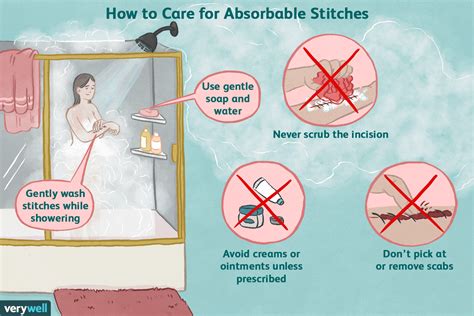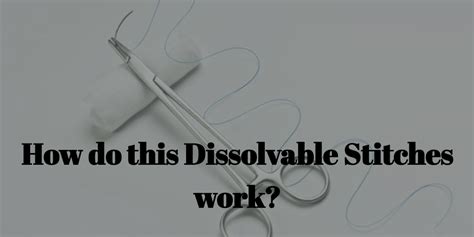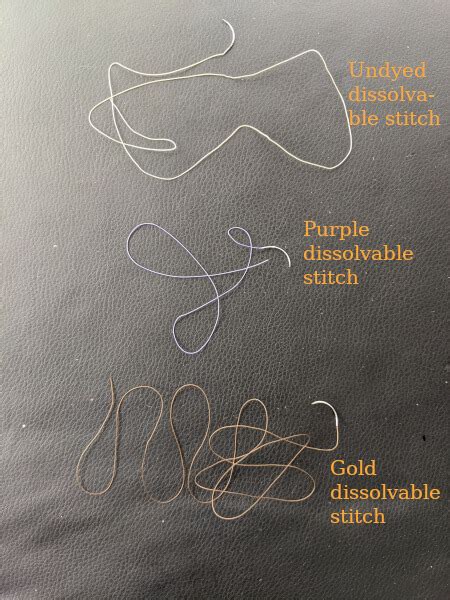Intro
Discover the benefits of dissolvable stitches, also known as absorbable sutures, and how they work through tissue healing, wound closure, and scar minimization, making recovery easier and safer.
The use of dissolvable stitches has become increasingly popular in the medical field due to their convenience and reduced risk of complications. Dissolvable stitches, also known as absorbable sutures, are designed to break down naturally in the body over time, eliminating the need for a follow-up procedure to remove them. This innovative technology has revolutionized the way surgeons and medical professionals approach wound closure and tissue repair. In this article, we will delve into the world of dissolvable stitches, exploring their benefits, working mechanisms, and the various types available.
The importance of dissolvable stitches lies in their ability to simplify the healing process for patients. Traditional non-absorbable sutures require a second procedure to remove them, which can be painful and may lead to infection or other complications. Dissolvable stitches, on the other hand, are made from materials that can be safely absorbed by the body, reducing the risk of adverse reactions and promoting a smoother recovery. With the advancements in medical technology, dissolvable stitches have become a preferred choice for many surgical procedures, including skin closure, tissue repair, and internal suturing.
The mechanism of dissolvable stitches is based on the body's natural ability to break down and absorb certain materials. These stitches are typically made from synthetic or natural polymers, such as polyglycolic acid, polylactic acid, or catgut, which are designed to degrade over time. The degradation process is triggered by the body's enzymes and hydrolysis, allowing the stitches to slowly dissolve as the wound heals. This process can take anywhere from a few days to several weeks, depending on the type of material used and the individual's healing rate. As the stitches dissolve, the body absorbs the remaining material, leaving behind a strong and healthy tissue repair.
Benefits of Dissolvable Stitches

Types of Dissolvable Stitches
There are several types of dissolvable stitches available, each with its own unique characteristics and benefits. Some of the most common types include: * Polyglycolic acid (PGA) sutures: These sutures are made from a synthetic polymer and are known for their high tensile strength and rapid absorption rate. * Polylactic acid (PLA) sutures: These sutures are also made from a synthetic polymer and are known for their biocompatibility and slow absorption rate. * Catgut sutures: These sutures are made from natural collagen and are known for their high biocompatibility and rapid absorption rate. * Vicryl sutures: These sutures are made from a synthetic polymer and are known for their high tensile strength and rapid absorption rate.How Dissolvable Stitches Work

Factors Affecting Dissolvable Stitches
Several factors can affect the performance and longevity of dissolvable stitches, including: * **Material type**: The type of material used to make the stitches can affect their absorption rate and tensile strength. * **Tissue type**: The type of tissue being repaired can affect the absorption rate and performance of the stitches. * **Patient factors**: Patient factors, such as age, health status, and nutritional status, can affect the healing rate and performance of the stitches.Applications of Dissolvable Stitches

Advantages Over Traditional Sutures
Dissolvable stitches have several advantages over traditional non-absorbable sutures, including: * **Reduced risk of infection**: Dissolvable stitches eliminate the need for a follow-up procedure, reducing the risk of infection and promoting a smoother recovery. * **Minimal scarring**: Dissolvable stitches can reduce the appearance of scars, making them a popular choice for cosmetic surgery. * **Decreased risk of complications**: Dissolvable stitches can reduce the risk of complications, such as adhesions and granulomas.Future Developments in Dissolvable Stitches

Challenges and Limitations
Despite the many benefits and advantages of dissolvable stitches, there are still several challenges and limitations to be addressed. These include: * **Variability in absorption rates**: The absorption rate of dissolvable stitches can vary depending on the material type, tissue type, and patient factors. * **Risk of complications**: Dissolvable stitches can still cause complications, such as infection and adhesions, if not used properly. * **High cost**: Dissolvable stitches can be more expensive than traditional non-absorbable sutures, making them less accessible to some patients.Conclusion and Final Thoughts

What are dissolvable stitches made of?
+Dissolvable stitches are made from synthetic or natural polymers, such as polyglycolic acid, polylactic acid, or catgut, which are designed to break down naturally in the body over time.
How long do dissolvable stitches take to dissolve?
+The time it takes for dissolvable stitches to dissolve can vary depending on the material type, tissue type, and patient factors, but it can range from a few days to several weeks.
Are dissolvable stitches safe?
+Dissolvable stitches are generally safe and have a low risk of complications, but as with any medical procedure, there is always a risk of adverse reactions or complications.
Can dissolvable stitches be used for all types of surgery?
+Dissolvable stitches can be used for a wide range of surgical procedures, including skin closure, tissue repair, and internal suturing, but they may not be suitable for all types of surgery, such as high-tension areas or areas with high infection risk.
How do I care for dissolvable stitches?
+To care for dissolvable stitches, keep the area clean and dry, avoid picking or scratching at the stitches, and follow any post-operative instructions provided by your medical professional.
